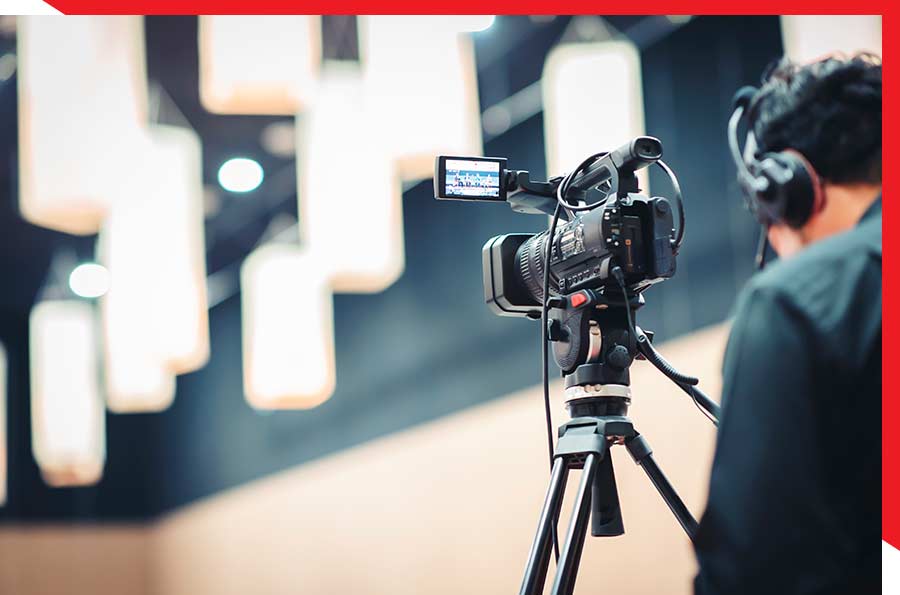The Ultimate Overview to Legal Videography for Lawyer and Legal Teams
Delving Into the Systems of Lawful Videography: Introduction Its Operation in Safeguarding Authentic Aesthetic Testament for Judicial Process
In the world of judicial procedures, the duty of legal videography stands as a keystone in preserving and offering visual proof. As modern technology continues to breakthrough, the systems behind lawful videography have come to be increasingly complex, offering a critical layer of authenticity to testaments captured on video.
Historic Advancement of Legal Videography
Checking out the historical progression of lawful videography discloses a significant improvement in the recording and presentation of visual evidence within the legal landscape. In the past, lawful process greatly counted on created photos and records to record occasions and provide evidence. Nevertheless, with the arrival of video technology, the legal market observed a standard change in how visual testimony was caught and provided.
The development of legal videography can be traced back to the late 20th century when innovations in video clip recording tools made it extra accessible for use in courtrooms. This technological development not only improved the accuracy and reliability of visual proof yet additionally changed the way instances were offered to juries and judges (Legal Videography). Attorneys started to identify the convincing power of video recordings in conveying emotions, subtleties, and non-verbal hints that composed photos or transcripts alone might not record efficiently

Innovation Innovations in Video Clip Paperwork
What essential technical improvements have reinvented video paperwork in the lawful area? The lawful field has actually seen significant improvements in video clip paperwork technology that have actually boosted the credibility and dependability of aesthetic evidence in judicial procedures. Among the essential developments is high-def (HD) video recording capabilities, which give crystal-clear images and sharp details that are crucial for accurately capturing statements, faces, and other aesthetic hints. In addition, the assimilation of timestamping and metadata functions in video paperwork tools has actually made it possible for precise documents of when and where the video was tape-recorded, making sure the honesty of the proof offered in court.
Moreover, advancements in video encryption and watermarking modern technologies have actually boosted the safety and security and tamper-proof nature of video clip proof, securing it against unauthorized alterations or meddling. In addition, the advent of cloud storage solutions and remote accessibility capabilities has streamlined the storage, access, and sharing of video clip evidence, promoting seamless collaboration among lawyers and making certain efficient accessibility to vital aesthetic testimonies when required. These technological developments in video documents have actually most certainly transformed the lawful area, boosting the accuracy, credibility, and admissibility of aesthetic proof in judicial process.
Duty of Lawful Videographers in Court Settings
The evolution of video clip documents innovation in the lawful field has actually necessitated an essential role for lawful videographers in courtroom settings, ensuring the stability and reliability of aesthetic testimonies provided during judicial proceedings. Legal videographers play a basic duty in catching and preserving this link exact aesthetic evidence that can be crucial in litigation. Their responsibility encompasses establishing up tools, taping procedures, and producing high-quality videos that accurately show the events in the court.
Furthermore, lawful videographers often work carefully with legal teams to make sure that the video clip proof straightens with the case's requirements and can be efficiently provided in court to sustain the lawful debates being made. On the whole, the duty of lawful videographers in court room setups is crucial in upholding the principles of justice and ensuring the transparency of lawful process. Legal Videography.

Ensuring Admissibility and Integrity of Video Evidence
To maintain the credibility of aesthetic proof presented in legal process, making sure the more helpful hints admissibility and integrity of video evidence is a crucial responsibility for lawful videographers. Admissibility refers to the acceptance go right here of evidence by the court, and for video evidence to be admissible, it has to fulfill certain requirements. Legal videographers play a vital duty in guaranteeing that the videos they record follow the policies of proof, such as authenticity, relevance, and reliability.
Honesty of video clip proof includes preserving the originality and accuracy of the footage from the moment it is videotaped till it exists in court. This consists of safely keeping the video files, recording the chain of guardianship, and avoiding any meddling or changes. Lawful videographers need to abide by strict methods to assure the stability of the video proof and protect against any type of difficulties to its authenticity.
Future Trends in Legal Videography
Offered the boosting reliance on technology in lawful procedures, lawful videographers are positioned to embrace cutting-edge innovations forming the future of visual testament capture and presentation. One of the noticeable patterns on the horizon is the assimilation of virtual fact (VIRTUAL REALITY) and enhanced fact (AR) technologies into legal videography. These innovations have the potential to reinvent how aesthetic evidence is offered in courtrooms, permitting discretionary to submerse themselves in the scene of the criminal offense or incident.
Moreover, using expert system (AI) formulas for video evaluation is anticipated to enhance the procedure of evaluating and assessing big quantities of video footage. AI can help in recognizing essential minutes, anomalies, and patterns within video clips, improving the performance of legal examinations.

Conclusion
To conclude, legal videography has actually played an essential duty in providing genuine visual proof for judicial proceedings. With technological innovations and the know-how of lawful videographers, the honesty and admissibility of video evidence are guaranteed in courtroom setups. As legal videography proceeds to evolve, it will be important to copyright requirements that keep the precision and reliability of aesthetic testament for the future of legal procedures.
Taking a look at the historic progression of legal videography exposes a substantial transformation in the catching and discussion of aesthetic proof within the legal landscape.The development of video clip documents modern technology in the legal field has required a critical role for legal videographers in courtroom settings, making sure the honesty and integrity of aesthetic testimonies presented during judicial procedures. Furthermore, lawful videographers commonly function very closely with lawful groups to make certain that the video clip proof straightens with the instance's needs and can be properly offered in court to sustain the lawful disagreements being made.To preserve the reputation of aesthetic proof provided in legal procedures, making sure the admissibility and stability of video evidence is a crucial responsibility for lawful videographers. As lawful videography proceeds to progress, it will be important to support standards that keep the precision and dependability of visual testimony for the future of lawful procedures.